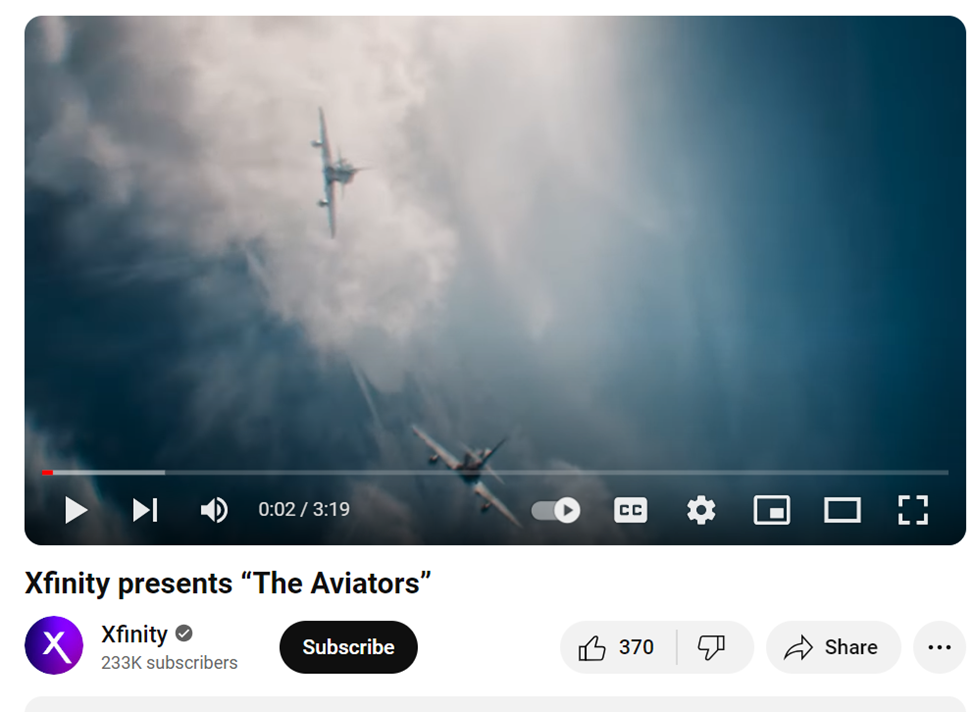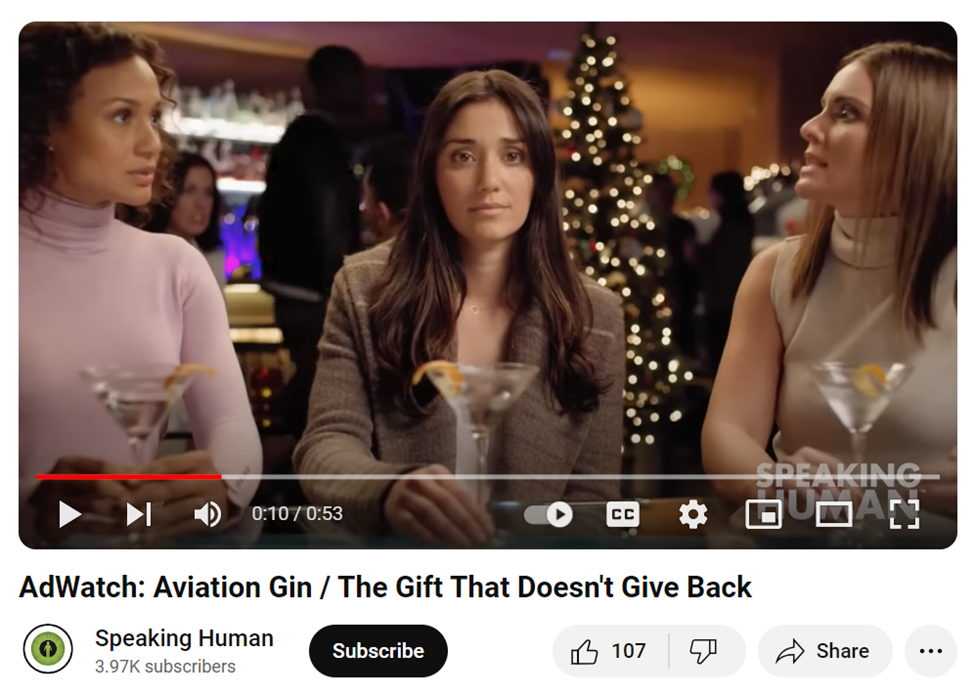PPC
Pay-Per-Click (PPC) Tools Market 2021 Westwin, Buzzsumo, Baidu, Microsoft, WordStream, Invoca …
The business study on world wide Pay-Per-Click (PPC) Tools market 2021 research report studies now along with prospective factors with the forex industry largely determined by aspects that your organizations compete on the present market, key trends and Pay-Per-Click (PPC) Tools segmentation investigation. This document covers each with this worldwide economy, which ranges from the crucial economy info and progressing more to many different vital criteria, in accord with that, the Pay-Per-Click (PPC) Tools economy is segmented. Pay-Per-Click (PPC) Tools industry research report assesses, tracks, and gift ideas which the international market dimension of this substantial competition in every region round the world. Moreover, the record provides data on the high market players out of the Pay-Per-Click (PPC) Tools market.
Request for a sample report here https://www.orbisresearch.com/contacts/request-sample/5414756
The investigation has been closely connected together with significant information in different kinds of tables and charts to grasp significant Pay-Per-Click (PPC) Tools market trends, challenges, along with drivers. The study is reprinted with the analysis also covers the existing Pay-Per-Click (PPC) Tools economy size of the growth rate through the past couple of decades. In Addition to that, the study Includes historic statistics of forthcoming years seeing business profiles of significant Pay-Per-Click (PPC) Tools players/manufacturers from the companies including
Westwin
Buzzsumo
Baidu
Microsoft
WordStream
Invoca
SpyFu
Leadpages
iSpionage
AdEspresso (HootSuite)
Twilio
Unbounce
CallRail
The report gives a clear picture of the current scenario of Pay-Per-Click (PPC) Tools Market 2021 and the forecast for the future of the industry Pay-Per-Click (PPC) Tools. It focuses on Pay-Per-Click (PPC) Tools market drivers, growth, trends, restraints and forecast for 2021-2027. In addition, it maps industry performance Pay-Per-Click (PPC) Tools by value chain analysis. So that it helps in the superior distinction of the products Pay-Per-Click (PPC) Tools. Further explanation of each segment in terms of Pay-Per-Click (PPC) Tools growth rate and desirability of the market pull index.
Pay-Per-Click (PPC) Tools Application/End Clients:
SMEs
Large Enterprises
Pay-Per-Click (PPC) Tools Product Type such as:
PPC Management Tools
PPC Keyword and Competitor Research Tools
PPC Call Tracking Tools
PPC Analysis Tools
PPC Landing Page Tools
Others
Pay-Per-Click (PPC) Tools Report Contains Geographies Such As:
The thorough information by various segments of Pay-Per-Click (PPC) Tools market enables readers to monitor prospective and make crucial decisions for sustainable improvement. The info from the research centres round the technical advancement, available abilities, SWOT and also PESTEL and the changing arrangement of this Pay-Per-Click (PPC) Tools market.
Ask our Expert if You Have a Query at: https://www.orbisresearch.com/contacts/enquiry-before-buying/5414756
Geographically this document is sub divided into several key regions,together with data associated with the manufacturing and consumption patterns, for example earnings (million USD)and also Pay-Per-Click (PPC) Tools marketshare and raised pace of economy in these regions, for example ten years at 2015 into 2027 (forecast), covering plus it’s Share (percentage) and CAGR because of its forecast period 2021 to 2027.
Highlights of the Pay-Per-Click (PPC) Tools Report 2021-2027:
* Market dynamics, Pay-Per-Click (PPC) Tools economy production, chances on the Entire prices of the top manufacturing company and advancement trend evaluation;
* Pay-Per-Click (PPC) Tools business gamers at the overall regional sector and market synopsis;
* deep evaluation of this most Critical marketplace players contained by Worldwide Pay-Per-Click (PPC) Tools Market analysis report;
* Evaluates that the Pay-Per-Click (PPC) Tools market fabricating invention, causing problems, and approaches to neutralize the growth threat;
* Know about the marketplace strategies which are now being embraced by top Pay-Per-Click (PPC) Tools companies;
* Assessment of this Industry character, specifically marketplace Growth motorists, Crucial challengers, inhibitors, and opportunities;
* To understand the numerous impacting driving and constraining drives at the Pay-Per-Click (PPC) Tools marketplace and its effect on the Worldwide industry;
* Assessment of Global Pay-Per-Click (PPC) Tools market tendencies with figures out of 2013, 2014, 2015 etc projections and forth out of CAGRs during 2027;
* Manufacturing price construction evaluation, business inspection, specialized information and production evaluation, Worldwide Pay-Per-Click (PPC) Tools economy evaluation with kind, program;
* Worldwide Revenue in Pay-Per-Click (PPC) Tools sector, business arrangement, development of industries along with sizing of local ingestion marketplace; (Countless Parts) And sales (Mn/Bn) economy split by Pay-Per-Click (PPC) Tools product style. Moreover, the analysis study is coordinated by software using historical and projected marketshare and yearly increase speed.
The report presents an aggressive Pay-Per-Click (PPC) Tools market landscape coupled with an overview of the business. It specifies the company profile Pay-Per-Click (PPC) Tools, its rules and recent developments. At the same time, describes Pay-Per-Click (PPC) Tools business transaction data. Described later on Pay-Per-Click (PPC) Tools market share, product and service.
In short, the report provides a significant parent complete Pay-Per-Click (PPC) Tools market research. Straightaway describes the Pay-Per-Click (PPC) Tools leading strategies of industry players and upcoming segments. Likewise includes the Pay-Per-Click (PPC) Tools analysis of market forecasts with volume and value. The most decisive part of the Pay-Per-Click (PPC) Tools study is the research findings. Thus the whole Pay-Per-Click (PPC) Tools report presents benefits for interested and existing players to oversee upcoming opportunities in the Pay-Per-Click (PPC) Tools market.
Direct purchase a single user copy of the report @ https://www.orbisresearch.com/contact/purchase-single-user/5414756
Author: Orbis Research (orbisresearch.com) is a single point aid for all your market research requirements. We have vast database of reports from the leading publishers and authors across the globe.
PPC
How to Capture Your YouTube Ads Audience in 5 Seconds

You could have the best product in the world, but if your ideal customers don’t know it exists, you’re just spinning your wheels. YouTube ads are a great way to get your video content in front of your audience – but it’s not enough to simply make a video.
Low video engagement is the scourge of many business owners, but it doesn’t have to be. You can increase brand awareness, attract new business, and get the attention of your target market with the right approach to video storytelling.
Here’s how to hook your audience within the first 5 seconds of your ad.
Plan Your Message
Though viewers prefer raw, authentic videos to more polished ads, you can’t exactly wing it. You need a clear, targeted message, or a concept that speaks directly to your target audience.
If you cast your net too widely, you’ll have a wishy-washy message that doesn’t capture the attention of your ideal viewer, or tell them why they should spend a few minutes watching your content. Know your audience and tailor the message to them.
To do that, you have to know what your audience is looking for. Think about:
- Their pain points
- Their interests
- The challenges or stress they experience every day
- The problems they’re trying to solve
- The content they enjoy
- The brand voice and personality they expect
Need a little guidance? Tools like Google Analytics and YouTube’s built-in analytics can offer key insights into your audience and competitors. You can also glean insights from interactions on your social media videos or other marketing content to better understand your audience.
Lead your YouTube Ads with a Catchy Headline
Just like the first line of an article, your headline has to make an impact – especially with YouTube ads. According to research, 8 out 10 people will never make it past the headline, so you have to use those precious view words to capture their attention.
Some tips for an effective video title:
- Make sure your title matches the content (no clickbait!)
- Know your audience and speak to them
- Rely on keyword research
- Create a sense of urgency
- Provide a compelling hook
- Keep your title under 60 characters
- Create listicle-style titles
- Study your competitors’ videos
This is an example of a good headline from Google Small Business that addresses the audience’s pain points and goals:
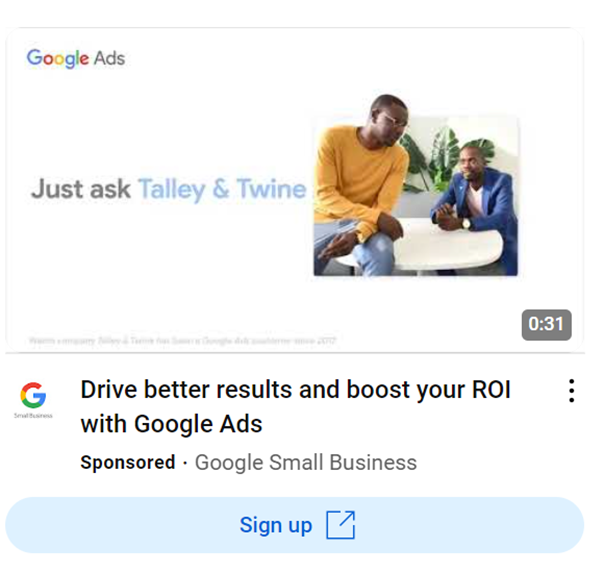
Tell a Story with your YouTube Ads
Humans are drawn to stories. Designing your video ad around a narrative will attract the viewer’s attention better than conveying information in a basic way. Your viewers become more immersed in the message and more compelled to take the action you want – signing up, subscribing, or completing a purchase.
How do you turn your content into a story? Think about the essence of what you want to say. Triumph over adversity? The power of community? The pursuit of a dream? Think beyond the direct benefits of your product or service to the larger context.
One of the best examples of storytelling in video ads is Xfinity’s recent ad, “The Aviators.” It tells the story of a clever granddaughter helping her veteran grandfather and his friends fly jets once again with the power of VR and Xfinity Internet.
Don’t Forget the Call to Action (CTA)
A clear and compelling call to action (CTA) is essential to every successful campaign, including YouTube ads. The CTA is how you tell the viewers what action you want them to take, whether it’s subscribing to your channel, checking out your website, or purchasing a product.
Like your headline, your CTA should be persuasive, clear, and concise so you viewers know exactly what you want them to do and how to do it. Your CTA should align with your ad’s message – which should motivate them throughout the content to seal the deal. Include a CTA as on-screen text and narration for more impact.
Keep Your Brand at the Forefront of your YouTube Ads
Video ads from the top brands are instantly recognizable through logo, brand colors, familiar faces, or other details. You should do the same with your brand to boost awareness and ensure you stay top-of-mind for your viewers.
That said, you don’t want to create a video that’s all about your brand with salesy language and a lot of promotional aspects. Try to include your brand as seamlessly as possible without detracting from the story and the message of value you’re offering for your audience.
Keep It Fun
Humor is a powerful tool in advertising and can capture attention and memory more successfully than other tactics, but you have to be careful about it. Humor is highly subjective – what’s hilarious to one person may be offensive to another.
When Peloton took a shot at humor with a holiday ad in 2019 that featured a man giving his wife a Peloton bike as a Christmas gift, the brand was heavily criticized for reinforcing negative body images.
However, the controversy did inspire a spoof ad from Aviation Gin that featured the same actress exchanging her stationary bike for gin martinis, which she drinks with friends. The caption read, “Exercise bike not included.”
One miss, one hit. Be mindful of how you incorporate humor and always aim to be entertaining and memorable, not offensive or controversial (unless that fits your brand).
Experiment and Test
There’s no one-size-fits-all solution to better YouTube ad engagement. What connects with one audience may fall flat with another, so you have to experiment a little and determine what speaks to your target viewers.
Try different storytelling techniques, headlines, CTAs, visual styles, multimedia additions, and video marketing SEO tactics to see what works and what doesn’t. Fortunately, YouTube has excellent analytics to track your ad performance and optimize your strategy moving forward.
Hook Your Audience
Creating attention-grabbing YouTube ads can feel like an overwhelming challenge – especially if you’re not getting much engagement with your current strategy. Incorporating some best practices, experimenting, and evaluating your ad performance can help you unlock the key to your audience and create ads that hook them in seconds.
Torrey Tayenaka is the co-founder and CEO at Sparkhouse, an Orange County based commercial video production company.
PPC
Google Ads Benchmarks 2024: New Trends & Insights for Key Industries
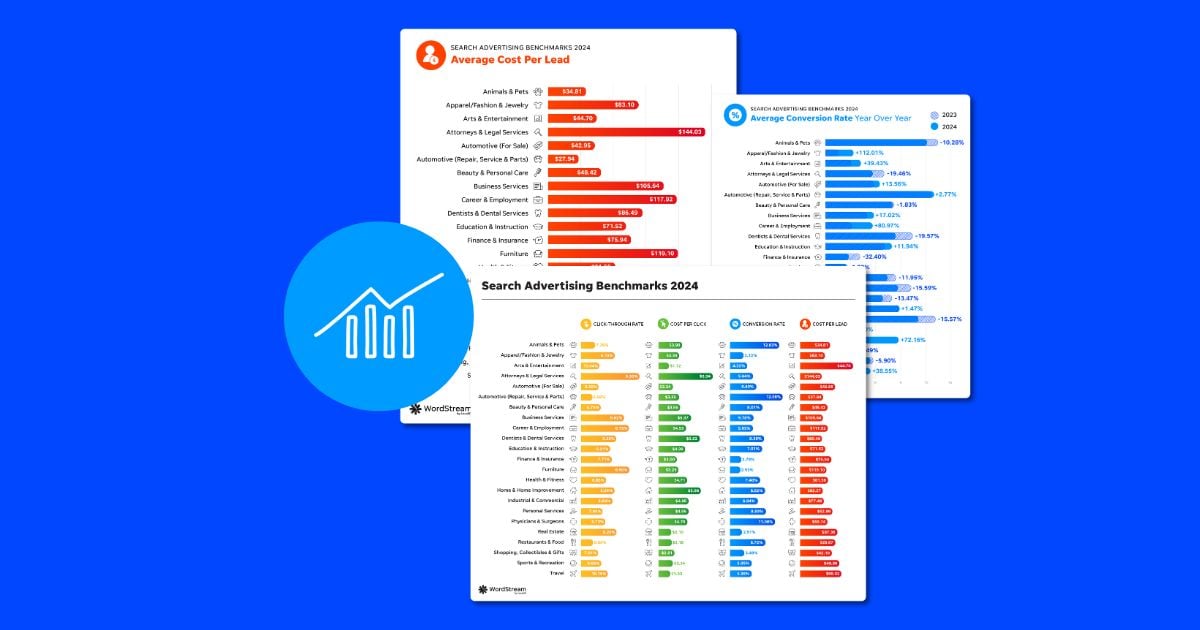
With over 80% of buying journeys beginning on search engines, it’s not a surprise that so many businesses are running search ads to capture searchers and convert them into customers.
But with search engines like Google constantly changing the search landscape, and with advertising costs rising across the board, it’s important to understand how your search ads are really performing to drive the best results for your business.
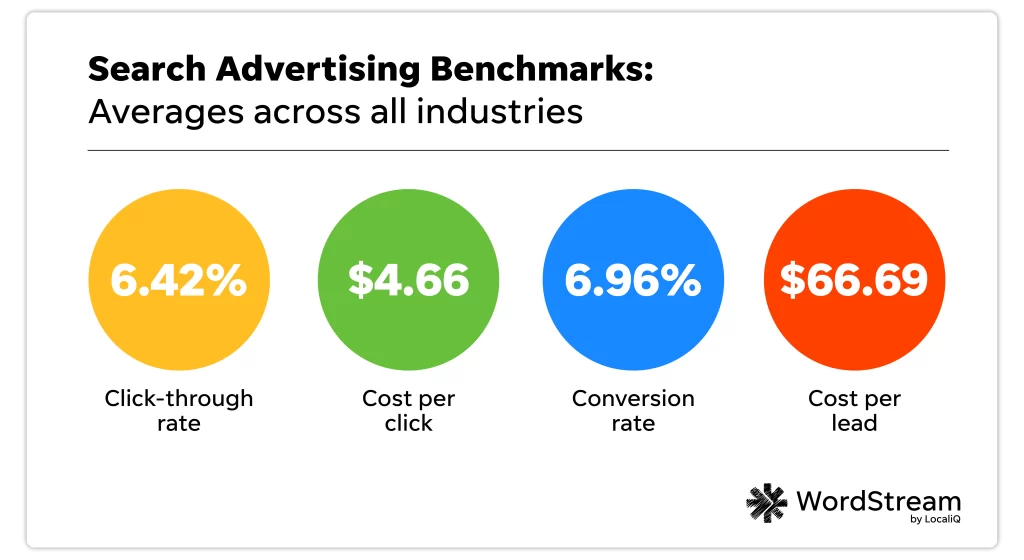
That’s where we come in! We analyzed over 17,000 campaigns running from April 2023 through March 2024 to create the latest version of our search advertising benchmarks report to give you a peek at how businesses in your industry are performing on Google Ads and Microsoft Ads.
We’re also providing expert insights and actionable tips to help you optimize your campaigns and get the best results from your search ads strategy.
🏃 Need to take this data to-go? We wrapped our 2024 Google Ads Benchmarks report into a free, easy-to-download guide here.
Contents
In remembrance of Mark Irvine
Our team was deeply saddened to learn of Mark Irvine’s sudden passing in early May. Mark was a longtime friend and colleague as well as a frequent contributor to the WordStream blog, and the author of our first Google Ads benchmarks report in 2016. Our hearts go out to his friends and loved ones. Find our tribute to Mark here.
Microsoft and Google Ads benchmarks: Key trends in 2024
Before we get into the metric-by-metric details, let’s first get a birds’ eye view of the latest benchmark data.
Here are the overall trends for Google Ads and Microsoft Ads in 2024 you need to know:
- Click-through rate improved for most industries. 70% of industries saw an increase in CTR year over year, some significantly, with an overall average increase of 5% since 2023.
- Cost per click increased for 86% of industries. Some industries, like Real Estate, Sports & Recreation, and Personal Services saw increases of over 25% year over year, with an average overall increase of 10%.
- Conversion rate decreased for 12 out of 23 industries, although the average was fairly minimal at only 1%. Some industries did see bigger decreases, like Finance & Insurance (-32.40) and Dentists & Dental Services (-19.57%). But some industries saw substantial increases YoY, such as Apparel / Fashion & Jewelry (112.01%) and Career & Employment (80.97%).
- Cost per lead increased for 19 out of 23 industries, with an average increase of about 25%. This is a little lower than last year’s 27% increase, which came after record inflation and an unstable economy.
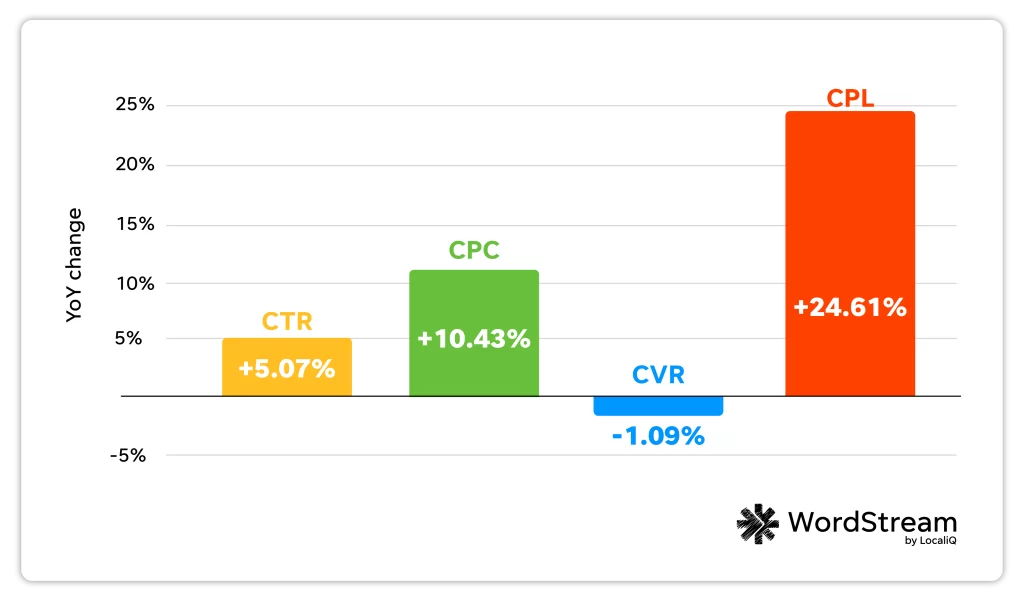

Year over Year Changes in Search Ads Metrics from 2023 to 2024
The overall takeaway from these trends? Increases in CTR indicate that the SERP is becoming more ad-friendly—for many queries, most results above the fold are ads, and ads continue to blend into organic results.


Google has also made broad match the default mode for match types, meaning ads may be matching to searches with relatively low commercial intent. This could lead to increases in clicks that don’t necessarily turn into sales.
The economy also continues to play a role in Google Ads costs increasing. In last year’s Google Ads benchmark report, CPC increased for about 60% of industries, but those increases were fairly small (averaging 2%). This year’s average is 10%, likely due to continued effects from inflation.
“The rise in CPC across most industries aligns with the ongoing economic challenges like inflation,” said Alessandro Colarossi, Partner Data Transformation Lead at Google.
It could also be due to Google increasing costs for their own bottom line. “Google only generates revenue when we click on ads… In 2023 those clicks generated $250B in revenue, up 5x over the last 10 years,” said Andy Crestodina, Co-Founder and CMO at Orbit Media, in this recent article.
🚨 Find out how your business compares to the industry average with our free Google Ads Grader!
Search ads benchmarks for every industry
Ready to dive deeper into some of the latest PPC trends? Here are the Microsoft Ads and Google Ads benchmarks across all metrics and industries for 2024.
Let’s take a closer look with a breakdown for each metric.
📧 Want the full data breakdown straight to your inbox? Download our free 2024 Google Ads benchmarks guide!
Average click-through rate in search ads
Click-through rate, while often overlooked in favor of cost-driven metrics, can be extremely telling when it comes to your search campaign performance. It indicates how frequently people are clicking on your ad once it’s shown in the SERP—which is half the battle when it comes to getting a conversion.
The average click-through rate in Google Ads in 2024 is 6.42%.
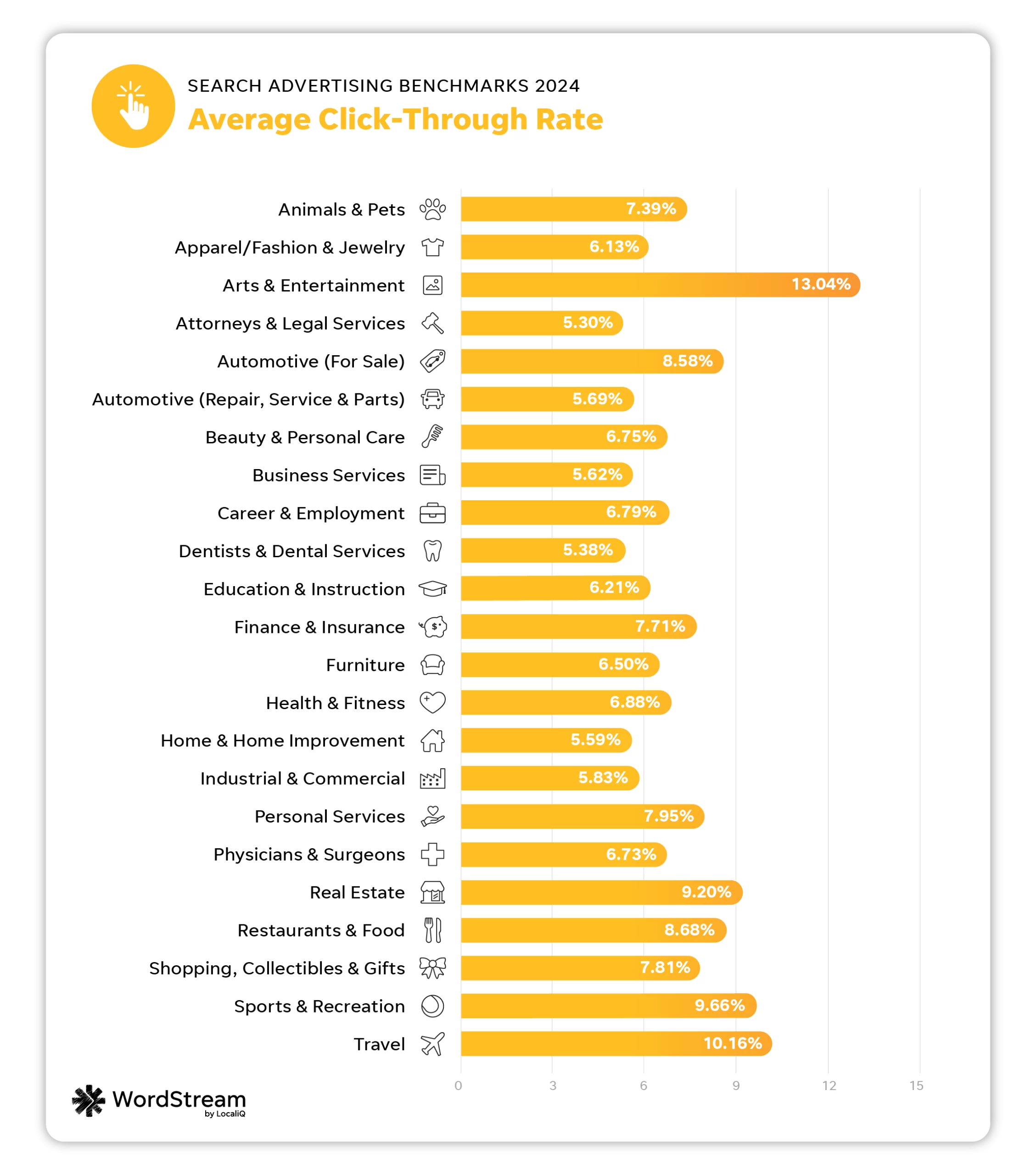

| Business category | Avg. CTR |
| Animals & Pets | 7.39% |
| Apparel / Fashion & Jewelry | 6.13% |
| Arts & Entertainment | 13.04% |
| Attorneys & Legal Services | 5.30% |
| Automotive — For Sale | 8.58% |
| Automotive — Repair, Service & Parts | 5.69% |
| Beauty & Personal Care | 6.75% |
| Business Services | 5.62% |
| Career & Employment | 6.79% |
| Dentists & Dental Services | 5.38% |
| Education & Instruction | 6.21% |
| Finance & Insurance | 7.71% |
| Furniture | 6.50% |
| Health & Fitness | 6.88% |
| Home & Home Improvement | 5.59% |
| Industrial & Commercial | 5.83% |
| Personal Services | 7.95% |
| Physicians & Surgeons | 6.73% |
| Real Estate | 9.20% |
| Restaurants & Food | 8.68% |
| Shopping, Collectibles & Gifts | 7.81% |
| Sports & Recreation | 9.66% |
| Travel | 10.16% |
The industries that saw the best average CTRs this year were Arts and Entertainment (13.04%), Sports and Recreation (9.66%), and Real Estate (9.20%).
Meanwhile, the industries with the lowest average CTRs were Attorneys and Legal Services (5.30%), Home and Home Improvement (5.59%) and Dentists and Dental Services (5.38%).
The overall increase in CTR for most industries indicates a more ad-friendly SERP, which has upsides and downsides. As results above the fold are increasingly populated by ads that blend seamlessly into organic results, advertisers will see an increase in clicks, but they may also see decreases in organic traffic.
“Since the advent of Responsive Search Ads, Google has been subtly shifting away from ads reading as a fixed three-headline format to something more flexible and agile for different screens. Now, you’re seeing ads with one headline that look nearly identical to their organic listings in every way,” said Mark Irvine, Vice President of Search at SearchLab.
Average click-through rate: YoY
The industries that saw the biggest increases in CTR performance year over year were Finance and Insurance (up 24.75%), Shopping, Collectibles, and Gifts (up 22.22%), and Home and Home Improvement (up 16.46%).
In contrast, the industries with the biggest decreases in CTR year over year were Animals and Pets (down 8.99%), Sports and Recreation (down 8.26%) and Apparel, Fashion, and Jewelry (down 5.11%).
The 2024 average CTR of 6.42% is higher than last year’s overall average of 6.11%.


How to improve click-through rate
If your current click-through rate doesn’t align with the average for your industry, you may want to consider how, exactly, your customers are searching for your business and tailor your ads accordingly.
“There are so many avenues now for consumers to find information that before you could only find on a website. You can be cooking dinner and just say ‘Alexa,’ or hit your watch and say ‘Hey, Siri.’ With so many ways for consumers to find search results, you are seeing the competition continue to increase,” said Stephanie Scanlan, Vice President of Client Success at LocaliQ.
Using keywords, headlines, and descriptions optimized for voice search, and answering customer pain points, questions, and more may make your ads more visible (and clickable) in the long run. You can find more ways to improve your click-through rate here.
Average cost per click in search ads
You can’t take your click-through rate into consideration without also factoring in your cost per click. Cost per click is a measure of how much you’re charged, on average, for a click on your search ads. Cost per click can vary depending on your bidding strategy, click-through rates, industry competition, and more.
The average cost per click in Google Ads in 2024 is $4.66.
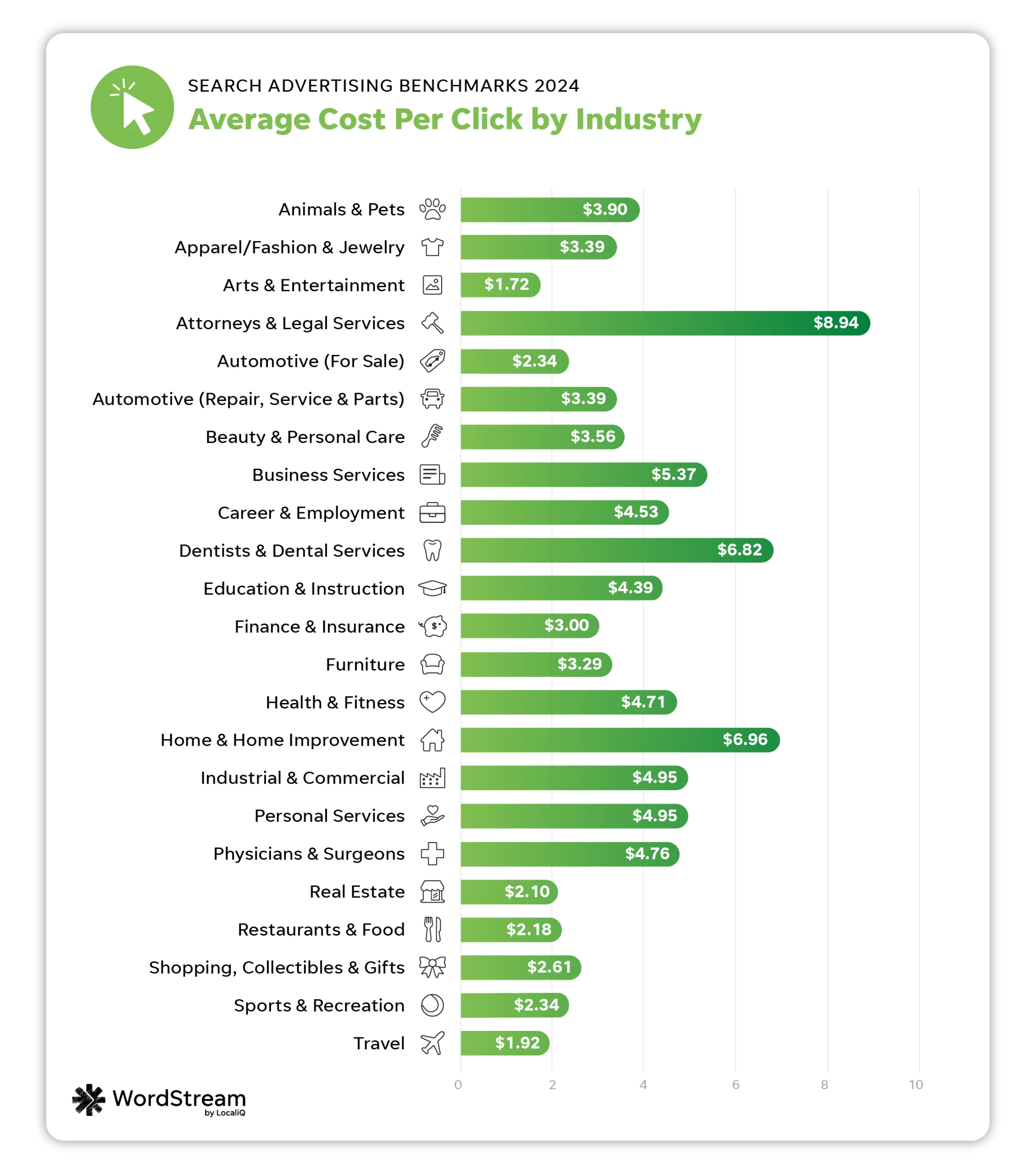

| Business category | Avg. CPC |
| Animals & Pets | $3.90 |
| Apparel / Fashion & Jewelry | $3.39 |
| Arts & Entertainment | $1.72 |
| Attorneys & Legal Services | $8.94 |
| Automotive — For Sale | $2.34 |
| Automotive — Repair, Service & Parts | $3.39 |
| Beauty & Personal Care | $3.56 |
| Business Services | $5.37 |
| Career & Employment | $4.53 |
| Dentists & Dental Services | $6.82 |
| Education & Instruction | $4.39 |
| Finance & Insurance | $3.00 |
| Furniture | $3.29 |
| Health & Fitness | $4.71 |
| Home & Home Improvement | $6.96 |
| Industrial & Commercial | $4.95 |
| Personal Services | $4.95 |
| Physicians & Surgeons | $4.76 |
| Real Estate | $2.10 |
| Restaurants & Food | $2.18 |
| Shopping, Collectibles & Gifts | $2.61 |
| Sports & Recreation | $2.34 |
| Travel | $1.92 |
This year’s industries with the lowest average CPCs were Arts and Entertainment at $1.72, Travel at $1.92, and Real Estate at $2.10.
The industries with the highest average CPCs were Attorneys and Legal Services ($8.94), Home and Home Improvement ($6.96), and Dentists and Dental Services ($6.82).
Last year, CPC increased for about 60% of industries, but those increases were fairly small (averaging 2%). This year’s average increase is 10%. This is likely due to continued effects of inflation; while rates on inflation have slowed, the costs of most goods and services have not come down.
While industries like Attorneys and Legal Services typically face higher costs, conversions from these pricier clicks can be of much higher value for these types of businesses.
It isn’t a shock that some industries are seeing high costs per click, as it was found in the Google Antitrust trial that CPCs have steadily increased over the years.


Average cost per click: YoY
The industries with the biggest drops in CPC performance were Real Estate (increased 35.48%), Sports and Recreation (increased 32.20%), and Personal Services (increased 26.92%).
Meanwhile, the industries that saw the biggest improvements in CPC performance were Finance and Insurance (-25.19%), Attorneys and Legal Services (-2.93%), and Business Services (-1.83%).
This year’s overall average CPC of $4.66 is 44 cents higher than last year’s average of $4.22.


How to lower cost per click
When it comes to any cost in Google Ads, including cost per click, there are a few factors that may be out of your control.
“The noticeable jump in CPC prices could be due to the lingering effects of inflation. Like almost everything else—advertising costs have gone up for businesses, and that is largely contributing to the changes in CPC trends we’re seeing,” said Goran Mirkovic, CMO at Freemius.
“Changes in industry-specific demand (like real estate), competition levels, unique advertising tactics, and consumer behavior could also be impacting these trends. As users interact with search results and ads in new ways, it’s only natural to expect that these changes will have a visible impact in both CTR and CPC rates,” said Goran.
However, there are still optimizations you can make to lower your cost per click. For example, tightly aligning your landing pages with your keyword intent can increase your Quality Score, which in turn can lower your cost per click.
Average conversion rate in search ads
Conversion rate is one of the most important PPC metrics to advertisers because it accounts for how many ad clicks turn into real sales or leads.
It can be tricky to balance trying to achieve a high conversion rate while lowering costs. That’s why it’s so important to closely track your conversion rate against other metrics in your account to get a holistic view of your strategy.
The average conversion rate in Google Ads in 2024 is 6.96%.
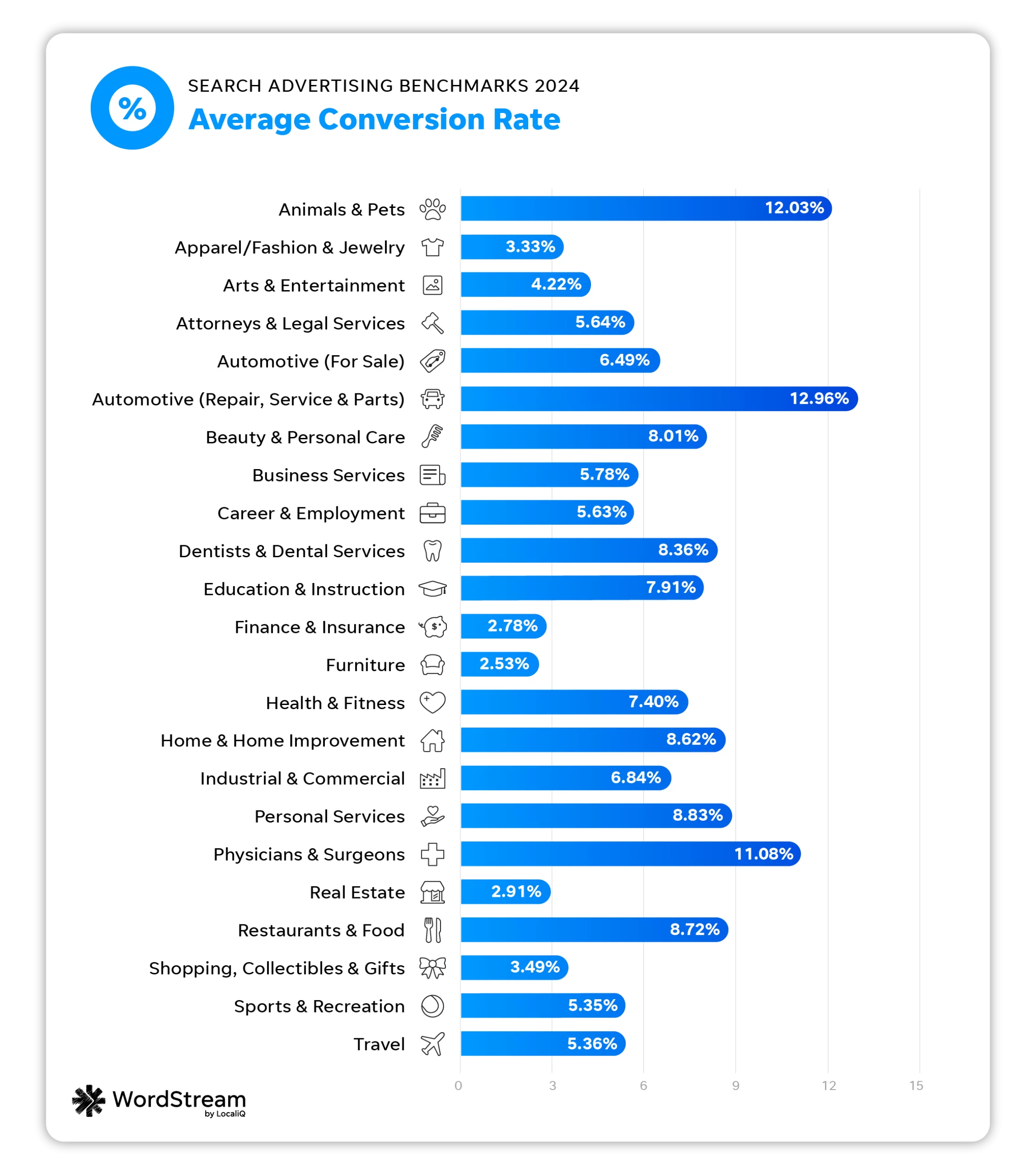

| Business category | Avg. CVR |
| Animals & Pets | 12.03% |
| Apparel / Fashion & Jewelry | 3.33% |
| Arts & Entertainment | 4.22% |
| Attorneys & Legal Services | 5.64% |
| Automotive — For Sale | 6.49% |
| Automotive — Repair, Service & Parts | 12.96% |
| Beauty & Personal Care | 8.01% |
| Business Services | 5.78% |
| Career & Employment | 5.63% |
| Dentists & Dental Services | 8.36% |
| Education & Instruction | 7.91% |
| Finance & Insurance | 2.78% |
| Furniture | 2.53% |
| Health & Fitness | 7.40% |
| Home & Home Improvement | 8.62% |
| Industrial & Commercial | 6.84% |
| Personal Services | 8.83% |
| Physicians & Surgeons | 11.08% |
| Real Estate | 2.91% |
| Restaurants & Food | 8.72% |
| Shopping, Collectibles & Gifts | 3.49% |
| Sports & Recreation | 5.35% |
| Travel | 5.36% |
The industries that had the highest average CVRs were Automotive Repair, Service, and Parts at 12.96%, Animals and Pets at 12.03%, and Physicians and Surgeons at 11.08%.
Industries that saw the lowest average CVRs were Furniture at 2.53%, Finance and Insurance 2.78%, and Real Estate at 2.91%.
As ads are blending into organic results, and often take up more space on the SERP even for search terms with low commercial intent, lower CVRs may be more common. This is because of an increase in clicks from people who may not be ready to convert.
Advertisers have to be really savvy in making the most of their spend and focusing their budget on the highest-intent keywords to maintain strong conversion rates.
Average conversion rate: YoY
The industries with the biggest conversion rate decreases were Finance and Insurance (-32.40%), Dentists and Dental Services (-19.57%), and Attorneys and Legal Services (-19.46%.)
The industries with the highest conversion rate increases were Apparel, Fashion, and Jewelry (112%), Career and Employment (80.97%), and Restaurants and Food (72.16%).
The 2024 overall average conversion rate of 6.96% is only slightly lower than last year’s average of 7.04%.
How to improve conversion rates
When you’re trying to improve your conversion rate, it’s important to first find any correlations between your conversion rate performance and your progress in other PPC metrics.
“All of your different KPIs (key performance indicators) give you a guide to what optimizations need to be made to improve your PPC results,” said Stephanie.
“While cost per conversion, conversion rate, and cost per lead are the indicators to focus most heavily on, a poor CTR or higher-than-needed CPC can also give you insights into a potential problem with your campaign—impacting the overall results. Each KPI should be reviewed both independently and within the bigger picture of overall results to see if they can be optimized to better improve your overall ROI.”
For example, if you find you have a low conversion rate but high CPCs, you should first try to get more clicks at a lower cost, since clicks are half the battle when securing conversions. You can learn more conversion rate optimization tips here.
Average cost per lead in search ads
You could say we saved the best metric in our benchmarks breakdown for last, since most advertisers use cost per lead as their core “money metric.” Cost per lead (also known as cost per conversion, cost per action, or cost per acquisition) determines how much a conversion sourced from a search ad costs your business on average.
The average cost per lead in Google Ads in 2024 is $66.69.
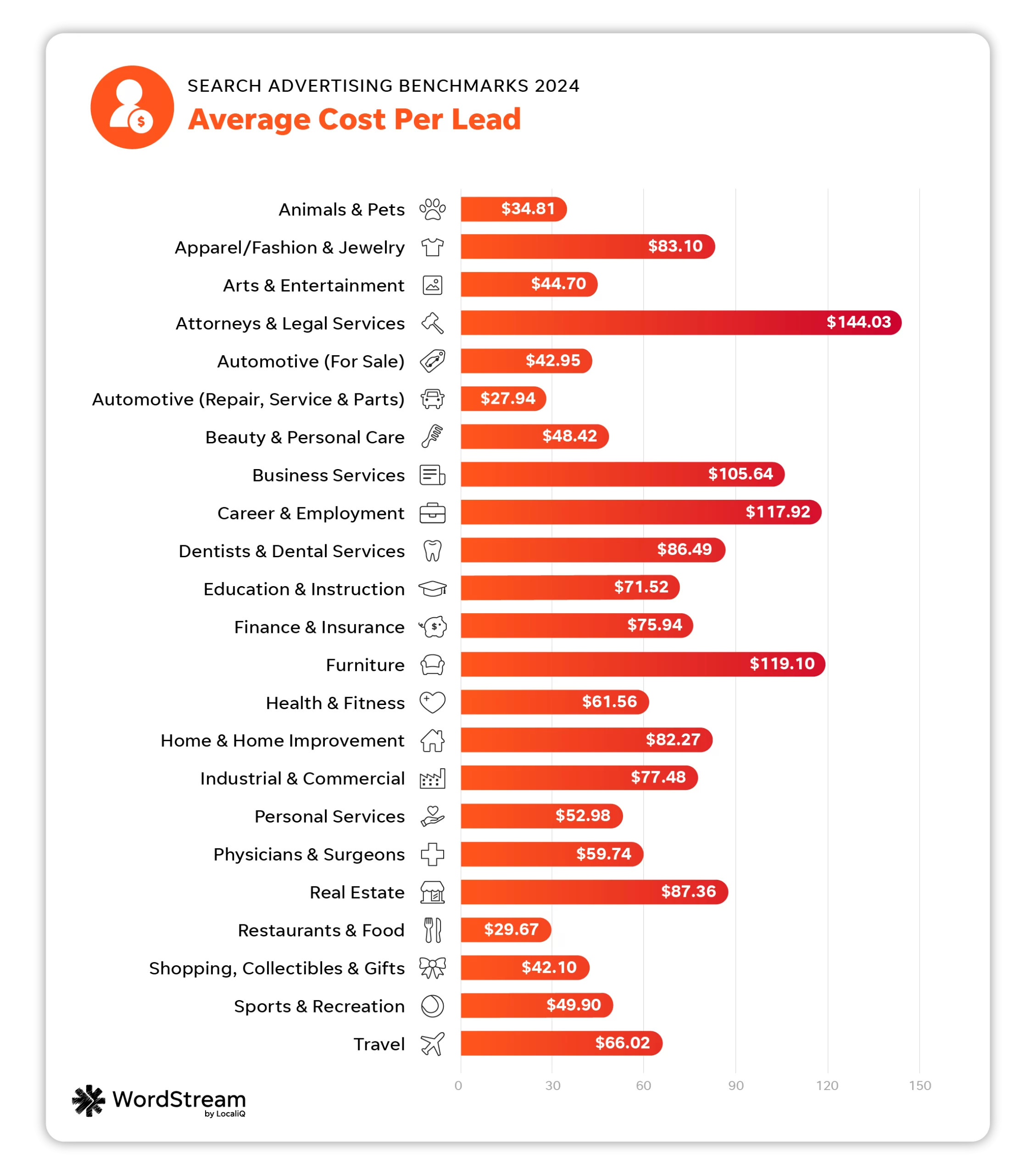

| Business category | Avg. CPL |
| Animals & Pets | $34.81 |
| Apparel / Fashion & Jewelry | $83.10 |
| Arts & Entertainment | $44.70 |
| Attorneys & Legal Services | $144.03 |
| Automotive — For Sale | $42.95 |
| Automotive — Repair, Service & Parts | $27.94 |
| Beauty & Personal Care | $48.42 |
| Business Services | $105.64 |
| Career & Employment | $117.92 |
| Dentists & Dental Services | $86.49 |
| Education & Instruction | $71.52 |
| Finance & Insurance | $75.94 |
| Furniture | $119.10 |
| Health & Fitness | $61.56 |
| Home & Home Improvement | $82.27 |
| Industrial & Commercial | $77.48 |
| Personal Services | $52.98 |
| Physicians & Surgeons | $59.74 |
| Real Estate | $87.36 |
| Restaurants & Food | $29.67 |
| Shopping, Collectibles & Gifts | $42.10 |
| Sports & Recreation | $49.90 |
| Travel | $66.02 |
The industries with the lowest average CPLs were Automotive Repair, Service, and Parts at $27.94, Restaurants and Food at $29.67, and Animals and Pets at $34.81.
Industries with the highest average CPLs included Attorneys and Legal Services ($144.03), Furniture ($119.10), and Career and Employment ($117.92).
In the US versus Google antitrust trial, it was brought to light by the Department of Justice that Google has been increasing advertising costs. This article explains how Google “has the power to raise prices when it desires to do so.”
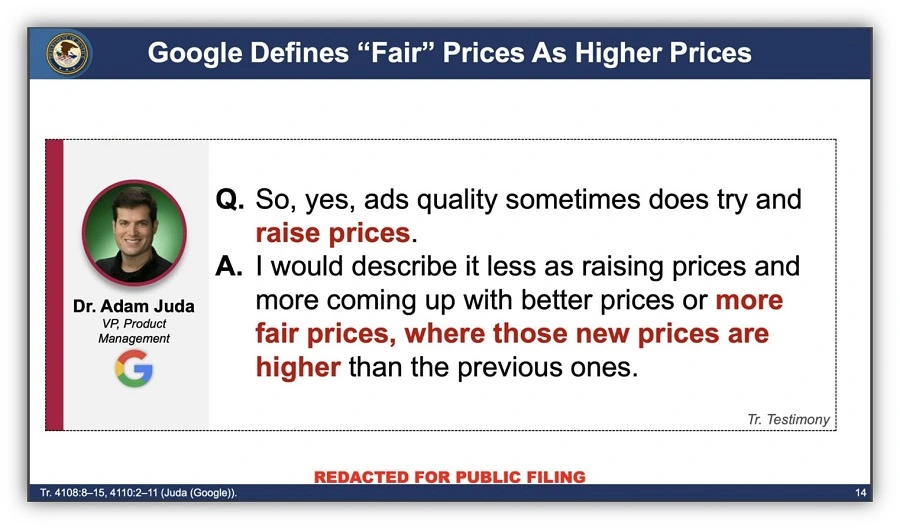

While this could have impacted overall costs for advertisers, it’s important to remember other factors beyond Google’s control (like the number of advertisers in your industry or your chosen account structure) still play a role in your cost per lead. So, if your industry has a higher cost per lead, you can identify ways to combat this—even if, at times, it feels like Google is hiking up prices.
Average cost per lead: YoY
The industries with the biggest improvements in cost per lead were Arts and Entertainment (-41.73%), Finance and Insurance (-15.64%), and Restaurants and Food (-14.77%).
Alternatively, the industries that saw their cost per lead go up year over year were Physicians and Surgeons (58.42%), and Sports and Recreation (56.82%), and Animals and Pets (47.69%).
This year’s overall CPL of $66.69 is $13.17 higher than last year’s average of $53.52.


How to improve cost per lead
While it can be easy to get hung up on how your cost per lead compares to other businesses in your industry, it’s important to focus on what matters to your business’s bottom line and optimize for that.
“This year’s search advertising benchmarks underscore the critical need for campaign optimization. While rising click-through rates suggest a more receptive environment for ads, the cost of clicks increasing, as well as shifts in conversion rates and cost per lead, demonstrate significant variation across industries,” said Katia Hausman, Vice President of Ad Products at LocaliQ.
Keeping in mind that there are some fluctuations and variations when it comes to cost per lead metrics, you may want to see how you can optimize all your campaigns across platforms to bring down your overall cost averages. For example, how you’re attracting and tracking conversions will directly impact your cost per lead numbers.
“This data is actually very surprising—the gains in click-through rate seem to indicate that folks are getting less valuable traffic. Advertisers are doing a great job creating ads to get the user to click, but they may not be able to track the conversions, so cost per lead goes up,” said Navah Hopkins, PPC Evangelist at Optmyzr.
Navah added that there might also be “false positives” within an advertiser’s conversion tracking. This could lead to more low-value actions (such as button clicks) being counted as conversions—skewing conversion numbers to appear higher. Automated bidding strategies would then be thrown off and start to overbid on less valuable ads. This means that businesses need to keep a careful eye on their conversion tracking set-up.
You can uncover more ideas to lower your cost per lead here.
What these search ads benchmarks and trends mean for your business
If you’re wondering how you can take action on these search advertising benchmarks, we’ve got you covered.
1. A holistic approach to your search ad strategy is key
While it can be easy to get preoccupied with individual platform performance, expanding your business’s reach by running ads across multiple search engines is a way to maintain maximum overall marketing ROI.
What to do about it
By running search ads across multiple search engines, including Google and Microsoft, you can maximize your budget and offset potential cost increases.
“As Google Ads CPCs and cost per lead continue to rise, we actually see the reverse in Microsoft Ads. It’s an interesting trend that can help to offset growing costs,” said Katia.


Data from US-based LocaliQ campaigns shows the difference in costs per click between Google and Microsoft.
2. AI and automation can boost results
Automation can help you keep your campaign optimized without sacrificing time or results. You can use automation and AI to simplify budget allocation, keyword management, and overall campaign optimizations.
What to do about it
It may take some trial and error, but look for AI-powered options within the platforms that work for your business; it can save you time and money in the long run.
“Don’t overlook the AI-driven features within Google Ads, such as Performance Max, broad match, and Demand Gen campaigns. These can significantly streamline campaign management and drive results, provided they’re fed with high-quality data,” said Alessandro.
3. Data-driven conversion tracking and first-party data are more important than ever
The upcoming deprecation of third-party cookies has been a hot-button topic within the PPC community for some time now. That said, with the sunset of third-party data fast approaching, it’s more important than ever to collect, organize, and act on your business’s owned, first-party data.
What to do about it
“These benchmarks emphasize the necessity for a data-driven approach to target the appropriate audience and optimize campaigns for conversions across all touchpoints (including websites and landing pages) within today’s competitive advertising landscape. Testing various optimization and bidding strategies continues to be instrumental in maximizing campaign performance,” said Katia.
For example, your conversion tracking strategy should pivot to meet the new tracking capabilities Google has rolled out, like data-driven attribution modeling.
“My top tip for enhancing PPC results revolves around comprehensive conversion tracking and leveraging durable tactics to future-proof your setup. Implementing tools like Enhanced Conversions can provide invaluable insights into campaign performance and audience behavior,” said Alessandro.


4. Some metrics might thrive while others fluctuate
If you feel like your search performance is all over the place, you’re not alone. As Google and Microsoft continue to test and change parts of the search journey, results will fluctuate.
What to do about it
You may need to look at other metrics, like return on ad spend (ROAS), to get a clear picture of your search ad progress.
“ROAS helps you assess the profitability of your advertising efforts by measuring the revenue generated for every dollar spent on ads. It helps a lot with understanding how well a PPC campaign is doing when it comes to driving revenue,” said Goran.
You’ll also need to prioritize some metrics over others depending on your goals.
“Most of our discussions focus on CPL and CVR. There can be all sorts of factors leading to more clicks on ads like the placement, blending into organic results, and bidding strategies optimizing for engagement,” said Michelle Morgan, Co-Founder of Paid Media Pros.
“But the real test of an ad campaign is how much business it actually drives. While we pay attention to all metrics, our bigger efforts are focused on ensuring our campaigns are profitable from a CPL and CVR standpoint.”
So, while you may see a decrease in one metric, try to look out for other growth opportunities within your ad accounts.
A typical ad account could still recover from a poor search performance with the right first-party data.
“I don’t think these metrics should be taken as a sign of doom and gloom. Rather, they represent the reality of the privacy-first world,” said Navah.
“If you’re not able to connect your conversions, and if you’re not able to spend to meet thresholds for modeling, you’ll see the vanity metrics go up (like CTR), while conversion rates and CPL flounder.”
5. Additional optimizations to ad assets are making ads more clickable
Not only are ads being incorporated into new search experiences, they also have the ability to blend in with organic results better than they have in the past—which may be part of the reason for the overall increase in CTR.
What to do about it
Take advantage of the optimization options available for your search advertising campaigns.
“Less than a decade ago, when I first made the WordStream benchmarks, the average CTR was 3.17%, and only one industry had a CTR above 6% (I thought that was an outlier at the time). Now the average is twice that! Ambitious advertisers might be able to realistically achieve double-digit CTRs this year with some creative work,” said Mark.
“We’re seeing Google more aggressively add images to their ads with image assets, Google Business Profile image assets, logo assets, and automating those for new advertisers as well. Not only are the ads becoming more attractive, but Google is also making them look less like ads at the same time.”


6. Google’s Search Generative Experience and Gemini can impact ads
The evolution of Google Ads isn’t just apparent from the advertiser’s perspective, but from the searcher’s perspective as well. For example, Google Gemini and the new Search Generative Experience (SGE) is changing how search results are curated and viewed.
“As SGE became more widely used over the past year and ads have been rolled out in that experience, I think we’re seeing that Google is still in the early stages of optimizing that experience for advertisers. Some of the top areas that Google has boasted its SGE product, like shopping and home improvement, are some of the industries where advertisers have the steepest drops in CTR,” said Mark.
“It’s likely that as people turned to Gemini in 2023 (formerly Bard), users may have seen new ad impressions from their AI chat companions. But unfortunately, those ads may not have been as great a response to their detailed organic responses and had relatively low CTRs when compared to more traditional searches. This growing SGE trend may be artificially dragging down the CTRs from advertisers in these industries,” said Mark.
What to do about it
Continue to evolve your ad copy, keyword intent, and landing pages to be more easily pulled into conversation-style search results. Consider what questions your customers may be looking to get answered by Gemini.
“The uptick in CTR, likely fueled by Google’s evolving SERP design, is also something I’ve seen firsthand. However, the data’s emphasis on the disconnect between higher CTR and lower conversions is interesting. In my view, it highlights the growing importance of proper audience targeting and intent optimization in Google Ads,” said Alessandro.


7. Economic shifts correlate with search ad metric fluctuations in certain industries
You might notice that some industries saw more aggressive year over year changes than others. This is no coincidence, as many external economic factors impact certain verticals more than others.
What to do about it
Take note of your industry’s strengths and weaknesses in the search advertising space. For example, if your industry has slowed during times of economic fluctuation, you may need to rethink how you approach your ads when your customers aren’t ready to buy.
“I think the finance and real estate industries are fascinating in how dramatically you’re seeing them change,” said Mark.
“As it becomes clear that interest rates are likely to stay high for a while and all financial advertisers now have less flexibility in their offers, their ads are becoming less competitive and less attractive from the otherwise bleak news on the SERP. However, at least this industry’s CPC is equally becoming less competitive as these advertisers have less of an edge to outbid each other.”
Meanwhile, real estate is seeing similar issues as the financial market, but real estate ads are struggling less.
“Price and mortgage costs may not be call-outs in their ads, but location, features, and new opportunities are much easier to attract clicks on the SERP, so their ads are still performing strong enough to maintain their CTR (and possibly CVR). This justifies for real estate businesses to increase their budgets to remain competitive in an industry that’s struggling offline,” said Mark.
8. Regular PPC audits are more important than ever
If there is one final takeaway from our 2024 Google Ads industry benchmarks report, it’s that staying on top of your account performance this year is critical as industry averages continue to fluctuate year over year.
What to do about it
Try scheduling regular PPC audits to see how your PPC metrics are pacing against the benchmarks in your industry.
“By regularly analyzing and refining keywords, ad copy, targeting, and bidding strategies—businesses can ensure that their ads are reaching the right audience and generating the best possible results.
In marketing and advertising, staying proactive and making data-driven adjustments is what gets rewarded,” said Goran.
Take action on these search advertising benchmarks
When it’s time to measure your PPC performance, and you’re not sure where to start, these benchmarks can be a guiding light. However, try to remember that no two Google Ads accounts are the same. What might work for one advertiser may not work for another. So, keep in mind that there is no right or wrong answer for how you approach your PPC strategy.
That said, using data like the averages in this report can help you make informed decisions about your marketing and advertising. The sooner you start to track and pivot your ad strategy, the better! Plus, if you find you still want more out of your PPC ads as you start optimizing your account, our solutions are here to help you make the most out of your search campaigns.
About the data
This report is based on a sample of 17,998 US-based search advertising campaigns running between Apr 1, 2023, and March 31, 2024. Our proprietary platform dynamically shifts budget between search channels on a campaign-by-campaign basis, but in aggregate, 80-85% of spend was allotted to Google Ads and 15-20% to Microsoft Ads. Each subcategory includes at minimum 70 unique active campaigns. “Averages” are technically median figures to account for outliers. All currency values are posted in USD.
PPC
The Ultimate Guide to Click Fraud

Click fraud involves deceptive practices that affect campaign integrity and efficiency of digital marketing campaigns. It presents a significant challenge to online advertisers.
Click fraud occurs when an individual, script, or program maliciously clicks on an online advertisement without any genuine interest in the offer behind the click.
This deceptive practice drains advertising budgets and skews marketing data.
At its core, click fraud is an attempt to simulate the appearance of interest in an advertisement.
This can be done for various reasons. They include draining a competitor’s advertising budget or earning undue revenue from pay-per-click (PPC) agreements.
Unlike legitimate clicks that reflect genuine interest, clicks generated through fraud provide no real value to advertisers.
Types of Click Fraud
Understanding the different mechanisms through which click fraud can be perpetrated is crucial for its detection and prevention. The most common types include:
- Bot Clicks: Automated programs, known as bots, mimic human behavior to click on ads. These bots can operate at a massive scale, generating vast amounts of fraudulent traffic.
- Competitor Clicks: In some cases, competitors may engage in clicking on ads maliciously to deplete the advertising budgets of their rivals, thereby hampering their ability to compete effectively.
- Click Farms: Groups of individuals are hired to manually click on advertisements. These click farms can be found across the globe. They are often used to generate fake clicks at a scale that automated systems can detect.
Bot Clicks
Bot clicks represent one of the most sophisticated and challenging forms of click fraud facing online advertisers today.
These automated programs are designed to mimic human behavior, interacting with digital ads as if they were genuine users.
The sophistication of such bots varies significantly; some operate on a basic level, randomly clicking on ads across the web. Others are highly advanced, capable of mimicking human browsing patterns, completing forms. They can even bypass security measures designed to differentiate between human and non-human traffic.
How Bot Clicks Operate
Bot clicks are generated through automated scripts or software programs. These bots can be distributed across numerous devices and networks. This makEs their traffic appear to originate from different locations and IP addresses.
This distribution helps to mask the fraudulent activity, complicating detection efforts.
Advanced bots further disguise their nature by emulating human interaction times, mouse movements, and even engaging in “random” non-linear browsing behaviors to evade pattern recognition systems.
Scale of Operation
The scale at which bots can operate is a significant part of what makes them such a formidable challenge.
A single botnet, which is a network of infected computers controlled by a hacker, can generate millions of clicks without any direct human involvement.
This capability allows fraudsters to inflict substantial financial damage on targeted advertising campaigns within a very short timeframe.
Impact on Advertisers
The impact of bot clicks on advertisers is multifaceted:
- Financial Loss: The most immediate effect is financial. Advertisers pay for clicks, assuming they represent genuine interest. Bot clicks drain budgets without providing any return on investment.
- Skewed Analytics: Bots inflate engagement metrics, leading advertisers to make misinformed decisions about the effectiveness of their campaigns. This distortion can misguide marketing strategies, budget allocation, and performance assessment.
- Deterioration of Advertiser-Publisher Trust: Over time, unchecked bot traffic can erode the trust between advertisers and publishers. Advertisers may become skeptical of the traffic quality provided by certain platforms, impacting future advertising relationships and negotiations.
Combating Bot Clicks
Efforts to combat bot clicks involve a combination of technology, vigilance, and collaboration:
- Advanced Detection Tools: Sophisticated detection tools analyze click patterns, verify IP addresses, and monitor user behavior to help identify and filter out bot traffic.
- Machine Learning and AI: Machine learning algorithms and AI can enhance the ability to detect anomalies in traffic that suggest bot activity, continually improving detection accuracy over time.
- Industry Collaboration: Sharing information about known bots and attack patterns within the industry can help advertisers and platforms stay one step ahead of fraudsters.
Understanding the nature and operation of bot clicks is essential for advertisers seeking to protect their investments.
Competitor Clicks
Competitor clicks refer to a deliberate and malicious practice where businesses click on their rivals’ online advertisements.
This form of click fraud is driven by the desire to undermine a competitor’s marketing efforts, draining budgets and thus making it more difficult for them to maintain a visible online presence.
As well as financial strain, the behaviour can produce inaccurate data. This can lead advertisers to change their campaigns in ways they otherwise wouldn’t if the information was honest.
Unlike bot-generated clicks, competitor clicks involve direct human action. This can make them challenging to identify due to their seemingly legitimate nature.
This tactic can be particularly appealing in highly competitive industries where advertising costs are high, and market share is fiercely contested.
Strategies for Mitigation
Addressing competitor clicks requires a multifaceted approach that combines vigilance, technological solutions, and potentially legal action:
- Monitoring and Analysis: Regularly monitoring ad performance and analyzing traffic sources for irregularities can help identify suspicious patterns indicative of competitor clicks.
- Geo-targeting and Ad Scheduling: Limiting ads to specific geographic locations or times can help avoid exposure to competitors, reducing the likelihood of fraudulent clicks.
- Legal Recourse: In some jurisdictions, engaging in click fraud can have legal consequences. If competitor clicks can be conclusively traced back to a source, legal action may be a viable option.
- Engagement with Ad Platforms: Many advertising platforms have mechanisms in place to identify and refund fraudulent clicks. Maintaining open communication with these platforms can help ensure that you’re not paying for illegitimate traffic.
Understanding the dynamics of competitor clicks is crucial for any business reliant on online advertising. By employing targeted strategies to mitigate their impact, businesses can protect their advertising investments.
Click Farms
Click farms represent a more human-centric approach to generating fraudulent clicks on digital advertisements in comparison to Bot Clicks.
These operations consist of networks of individuals who are paid to manually click on ads, visit websites, and even interact with content to feign genuine user engagement.
Unlike bots click farms use human labor to produce clicks and interactions. This makes it harder for algorithms to distinguish them from legitimate traffic.
As well as the effects associated with bots and competitors, clickfarms can be harmful to an advertiser’s reputation. Platforms and consumers may begin to associate certain brands with low-quality traffic, potentially damaging reputations over time.
Operation and Global Presence
Click farms operate in a relatively straightforward manner: individuals are recruited and organized into groups, often in low-wage countries, to click on specified advertisements or interact with digital content for hours at a time.
These operations can range from small setups with a handful of individuals to large-scale operations employing hundreds or even thousands of people.
The global presence of click farms is widespread.
The decentralized nature of click farms, coupled with the use of VPNs and proxy servers to mask the real geographical location of the clicks, complicates the task of tracing and addressing this form of click fraud.
Challenges in Detection and Prevention
Detecting click farm activity poses a significant challenge due to the human element involved. However, some strategies can be employed to mitigate their impact:
- Pattern Recognition: Advanced analytics and machine learning tools can help identify patterns typical of click farms, such as unnatural spikes in traffic or clicks coming from geographical locations not matching the target audience.
- Strengthened Ad Network Policies: Ad networks continuously improve their policies and detection mechanisms to identify and penalize advertisers or publishers involved in click farm activities.
- Selective Targeting and Engagement: By carefully choosing where and when ads are displayed, and by closely monitoring engagement patterns, advertisers can reduce their exposure to click farms. This might include avoiding advertising in regions known for click farm operations or adjusting bids based on the quality of traffic received.
Mitigating the Risk
To mitigate the risk of click farm fraud, advertisers must remain vigilant, employing a combination of technology and best practices to identify and reduce fake clicks. This includes regularly auditing traffic sources, implementing more stringent targeting criteria, and working closely with ad platforms to report and address suspicious activities.
Importance of Understanding Click Fraud for Businesses and Advertisers
For businesses and advertisers, the ramifications of click fraud extend beyond just wasted financial resources.
It can lead to misguided decisions based on distorted data, misallocation of marketing budgets, and diminished campaign performance.
Understanding click fraud in all its forms and nuances is the first step in developing effective strategies to combat it. This knowledge not only aids in safeguarding advertising investments but also ensures the integrity of marketing campaigns, allowing for genuine engagement with potential customers.
In a time when digital visibility is crucial for market success, safeguarding against fraudulent activities is essential.
Notable Click Fraud Operations
1. Methbot Operation
- Overview: Methbot was one of the largest and most sophisticated ad fraud schemes ever uncovered, primarily active around 2015-2016. It was operated by a Russian cybercriminal group and named after its key software, “Methbot.”
- Method: The operation used an extensive network of bots, running on over half a million fake web pages that mimicked the sites of legitimate publishers. These bots simulated human behavior to view video ads, generating fraudulent ad views on a massive scale.
- Impact: Methbot generated upwards of $3 to $5 million in fraudulent ad revenue per day, according to some estimates. Its sophistication and scale highlighted the vulnerabilities in digital ad ecosystems and the need for advanced detection and prevention strategies.
2. 3ve Operation
- Overview: Uncovered in 2018, 3ve was another extensive digital ad fraud operation. It combined three separate campaigns, hence the name 3ve (pronounced “Eve”), and involved over 1 million compromised IP addresses.
- Method: This operation used a mix of techniques, including infecting users’ computers with malware to create a botnet for generating fraudulent ad views and clicks, as well as creating fake websites to host ads and utilizing spoofed IP addresses to simulate geographically relevant traffic.
- Impact: 3ve affected thousands of advertisers and siphoned off millions of dollars before it was taken down through a coordinated effort by Google, White Ops (now HUMAN Security), and various law enforcement agencies. The operation led to several arrests and highlighted the importance of cross-industry collaboration in combating ad fraud.
3. ZeroAccess Botnet
- Overview: ZeroAccess was a prominent botnet that, at its peak, affected millions of computers worldwide. It was primarily used for click fraud and Bitcoin mining.
- Method: The botnet infected computers through various vectors, turning them into bots that executed click fraud on a massive scale, alongside other malicious activities. ZeroAccess used sophisticated methods to avoid detection and removal, making it one of the more resilient threats at the time.
- Impact: The financial damage caused by ZeroAccess in terms of wasted advertising spend and bandwidth consumption was significant, running into millions of dollars. Efforts by companies like Microsoft and law enforcement led to a partial takedown of the botnet, underscoring the challenges of eradicating such distributed threats.
These case studies exemplify the diversity of click fraud operations, from botnets and malware to sophisticated ad fraud schemes.
Detecting Click Fraud
Detecting click fraud is a critical component of digital advertising security, ensuring that budgets are spent efficiently and that campaign data reflects genuine user engagement.
Identifying fraudulent activity requires a combination of vigilant monitoring, sophisticated tools, and an understanding of traffic and click pattern irregularities.
Indicators of Click Fraud
Several key indicators can signal the presence of click fraud in digital advertising campaigns:
- Abnormally High Click-Through Rates (CTR): While a high CTR is generally positive, an unexpected or unexplained surge can be indicative of fraudulent activity.
- Short Duration Visits: If analytics show a significant portion of clicks result in very brief site visits, often seconds, this may suggest non-genuine interaction.
- High Bounce Rates: Similar to short-duration visits, a high bounce rate with a correspondingly high CTR might indicate fraudulent clicks.
- Geographic Inconsistencies: Receiving clicks from regions not targeted by your campaign or from locations known for click farms can be suspicious.
- Irregular Times of Activity: A sudden influx of clicks during off-peak hours, especially in patterns not consistent with your typical traffic, could suggest fraud.
Tools and Technologies for Detection
A variety of tools and technologies are available to help detect and mitigate click fraud:
- Automated Detection Software: Many platforms offer built-in fraud detection features. Additionally, third-party software can provide an extra layer of protection by analyzing traffic and identifying potential fraud.
- AI and Machine Learning: Advanced solutions utilize artificial intelligence and machine learning algorithms to recognize patterns and behaviors indicative of click fraud. These systems can adapt over time, improving their detection capabilities.
- Traffic Analysis Tools: Tools that offer deep insights into traffic sources, behavior patterns, and engagement metrics can help advertisers identify inconsistencies that may signal fraud.
Analyzing Traffic and Click Patterns for Irregularities
Effective detection of click fraud involves a detailed analysis of traffic and click patterns, looking for anomalies and irregularities:
- Benchmarking Normal Traffic Patterns: Establishing a baseline for normal traffic and engagement patterns allows for easier identification of anomalies. This includes understanding typical user behavior, average session durations, and normal CTRs for your campaigns.
- Segmentation Analysis: Breaking down traffic by variables such as device type, geographic location, and time of day can help isolate suspicious activity. For example, an excessive number of clicks from a single device type or location might indicate fraud.
- Looking for Patterns in IP Addresses: Repeated clicks from the same IP addresses, especially in short successions, can be a strong indicator of fraudulent activity. IP analysis can also reveal the use of VPNs and proxies commonly used by click farms and bots.
Impact of Click Fraud
The impact of click fraud extends beyond immediate financial losses, affecting the broader integrity of online advertising ecosystems, skewing campaign data, and influencing marketing strategies. Understanding the multifaceted consequences of click fraud is essential for businesses seeking to navigate the digital advertising landscape effectively.
Long-term Consequences for Online Advertising Ecosystems
The pervasive issue of click fraud poses significant threats to the sustainability and trustworthiness of online advertising ecosystems:
- Decreased Advertiser Confidence: As advertisers become more aware of the prevalence of click fraud, their confidence in digital advertising platforms may wane. This decreased trust can lead to reduced advertising spend and a search for alternative marketing channels.
- Inflation of Advertising Costs: To compensate for losses due to fraud, platforms may increase the cost of advertising, further straining advertiser budgets and exacerbating the challenge of achieving a positive return on investment.
- Innovation and Regulation: While the challenge of click fraud spurs innovation in detection and prevention technologies, it also calls for more stringent regulations and standards within the industry. This evolving landscape can both offer new opportunities and impose additional burdens on advertisers and platforms alike.
Preventing Click Fraud
Preventing click fraud is essential for maintaining the integrity of digital advertising efforts and ensuring that marketing budgets are spent effectively.
Through a combination of best practices, proactive fraud detection measures, and strategic platform selection, advertisers can significantly reduce their exposure to fraudulent activities.
Best Practices for Advertisers and Marketers
- Educate Your Team: Awareness is the first step in prevention. Ensure your marketing team understands what click fraud is, how it can impact your campaigns, and the common signs of fraudulent activity.
- Use Anti-Fraud Technologies: Invest in reputable anti-fraud technologies and services that specialize in detecting and mitigating click fraud. These tools can provide an additional layer of protection by analyzing traffic in real-time and flagging suspicious activities.
- Implement Strict Targeting: Narrow your ad campaigns’ targeting to focus on demographics and geographies that are most relevant to your business. This approach not only improves campaign effectiveness but also reduces the likelihood of attracting fraudulent clicks.
Setting Up Fraud Detection Measures
- Enable Click Fraud Monitoring: Many ad platforms offer monitoring tools that can be enabled to track the behavior of clicks and detect patterns indicative of fraud.
- Analyze Traffic Regularly: Conduct regular analyses of your traffic data for abnormalities such as spikes in traffic from specific regions or devices, short session durations, and unusually high bounce rates.
- Use CAPTCHAs and IP Blocking: Implement CAPTCHAs for interactive elements of your campaigns to deter bots, and use IP blocking to exclude traffic from known fraudulent sources.
Choosing the Right Platforms and Ad Networks
- Research and Select Trusted Platforms: Opt for advertising platforms and networks with robust anti-fraud measures and positive reputations for managing click fraud. Platforms that are transparent about their efforts to combat fraud are generally more reliable.
- Demand Transparency: Work with platforms that provide detailed reporting and analytics tools, allowing you to see where your ads are being placed and how they are performing.
How Do I Get Rid of Click Fraud?
Immediate Steps to Take When You Detect Click Fraud
- Pause Your Campaigns: Temporarily pausing affected campaigns can prevent further loss until the source of fraud is identified and addressed.
- Report to Ad Platforms: Immediately report the suspected fraud to your ad platform. Provide them with detailed evidence of the suspicious activity to support your claim.
Working with Ad Platforms for Refunds and Blocking Fraudulent Sources
- Request Refunds: Many ad platforms have procedures in place for investigating click fraud claims and issuing refunds for fraudulent clicks. Be prepared to provide detailed data to support your refund request.
- Collaborate on Prevention: Work closely with ad platforms to identify and block fraudulent sources. This collaboration can lead to the development of customized solutions to protect your specific campaigns.
Continuous Monitoring and Adjustment Strategies
- Regularly Review Campaign Performance: Continuously monitor your campaign performance for signs of click fraud. Adjust your strategies based on insights gathered from your ongoing analysis.
- Stay Updated on Trends: Click fraud tactics evolve, so staying informed about the latest trends in fraud and prevention measures is crucial. Regularly updating your knowledge and tools can provide ongoing protection for your campaigns.
Preventing click fraud requires a proactive, informed approach. By implementing these best practices and remaining vigilant against new threats, advertisers can better protect their investments and ensure the integrity of their online marketing efforts.
Legal and Ethical Considerations
The issue of click fraud brings to the forefront significant legal and ethical considerations within the digital advertising industry. Understanding the legal landscape, ethical implications, and available recourse can empower businesses to navigate these challenges more effectively.
Is Click Fraud Legal?
Click fraud is considered illegal under various laws that prohibit fraudulent activities and cybercrime. However, the specific legal classification and penalties associated with click fraud can vary significantly by jurisdiction.
At its core, click fraud involves deception and financial harm, aspects that are generally actionable under laws related to fraud, computer misuse, and unfair competition.
Overview of Laws and Regulations Against Click Fraud
- Computer Fraud and Abuse Act (CFAA) in the U.S.: This federal statute is one tool used to combat click fraud, addressing unauthorized access or use of computer systems, which can include the deployment of bots for fraudulent clicking.
- Wire Fraud Statutes: In many jurisdictions, click fraud can be prosecuted under general wire fraud statutes, given that it involves the use of telecommunications or the internet to carry out fraudulent schemes.
- Consumer Protection Laws: Laws aimed at protecting consumers from deceptive practices may also be applied to click fraud, particularly when false advertising or misrepresentation is involved.
The complexity of digital advertising ecosystems and the transnational nature of the internet can complicate legal actions against click fraud, highlighting the need for international cooperation and specific cybercrime legislation.
Ethical Considerations in Digital Advertising
Beyond legality, click fraud raises ethical concerns that can undermine trust in digital ecosystems:
- Transparency: Advertisers and platforms have a duty to ensure transparency in how clicks are generated and accounted for. Concealing or ignoring fraudulent activities can erode trust among all stakeholders.
- Fair Competition: Click fraud distorts competition by unfairly depleting competitors’ advertising budgets, violating principles of fair play.
- Consumer Trust: Engaging in or tolerating click fraud can diminish consumer trust in digital advertisements, affecting the credibility of online marketing channels.
Adhering to ethical standards is crucial for maintaining the integrity and sustainability of digital advertising.
Future of Click Fraud
As digital advertising continues to evolve, so do the methods and tactics of click fraud.
Understanding emerging trends, the role of advanced technologies in combating this fraud, and making informed predictions about the future of online advertising are crucial for staying ahead in this ongoing battle.
Emerging Trends and Technologies
The landscape of click fraud is constantly shifting, with fraudsters regularly adopting new technologies to carry out their schemes. Some emerging trends include:
- Sophisticated Botnets: As bot detection techniques become more advanced, so too do the botnets. These networks are increasingly mimicking human behavior more accurately, making them harder to detect.
- Machine Learning for Fraud Creation: Just as defenders use machine learning to detect fraud, attackers are beginning to use these technologies to learn and adapt to new detection methods, creating a cat-and-mouse dynamic.
- Cross-Platform Fraud: Fraudulent activities are spreading across platforms, from traditional web-based advertising to mobile apps and social media platforms, exploiting the integrated nature of digital ecosystems.
The Role of AI and Machine Learning in Combating Click Fraud
Artificial Intelligence (AI) and Machine Learning (ML) are at the forefront of the fight against click fraud, offering powerful tools to identify and mitigate fraudulent activities:
- Pattern Recognition: AI/ML algorithms excel at detecting patterns and anomalies in data, including subtle signs of fraud that might elude human analysts.
- Predictive Analytics: These technologies can predict potential fraudulent activities by analyzing historical data and identifying risk factors associated with click fraud.
- Real-Time Monitoring and Response: AI systems can monitor campaign data in real-time, providing immediate responses to suspected fraud, thereby minimizing potential losses.
Predictions for the Online Advertising Industry
The future of click fraud and its impact on the online advertising industry hinge on several factors, including technological advancements, regulatory changes, and shifts in advertiser strategies:
- Increased Investment in Fraud Detection: Businesses are likely to allocate more resources toward advanced fraud detection solutions as the cost of click fraud becomes increasingly untenable.
- Greater Collaboration Among Stakeholders: There may be an uptick in collaboration between advertisers, platforms, and regulatory bodies to establish industry-wide standards and share intelligence on fraudulent activities.
- Regulatory and Legal Evolution: New laws and regulations specifically addressing online fraud and digital advertising practices are expected to emerge, providing clearer frameworks for combatting click fraud.
- Shift Toward Quality Over Quantity: Advertisers might prioritize metrics that reflect genuine user engagement and conversion over sheer volume of clicks, adjusting their strategies to focus on quality traffic.
As the digital advertising ecosystem becomes more complex, the battle against click fraud will continue to require vigilance, innovation, and cooperation among all stakeholders.
The ongoing development of AI and ML technologies represents a opportunity, promising more effective tools for detecting and preventing click fraud.
However, the adaptability of fraudsters means that strategies must continually evolve.
The future of online advertising will likely be characterized by a heightened emphasis on security, transparency, and sustainable engagement practices, ensuring that investments in digital ads yield genuine value.
Click Fraud Protection Software and Service Companies
In the evolving battle against click fraud, a variety of companies have emerged, each offering unique solutions designed to protect advertisers and ensure the integrity of digital advertising.
ClearTrust https://cleartrust.cc/ offers tailored protection mechanisms focusing on transparency and trust in ad transactions.
Lunio https://lunio.ai/ leverages AI to provide advertisers with insights and tools for combating fraudulent traffic in real-time.
CHEQ https://essentials.cheq.ai/ introduces a comprehensive suite for digital security, including click fraud prevention, with an emphasis on real-time protection.
Fraud0 https://www.fraud0.com/ specializes in detecting and preventing ad fraud using advanced analytics and real-time monitoring, targeting a wide range of online fraud types.
Singular https://www.singular.net/ stands out with its marketing analytics platform that integrates fraud prevention, aiming to optimize advertising spend and enhance ROI.
TrafficGuard https://www.trafficguard.ai/ proactively blocks fraudulent traffic, safeguarding advertising budgets with precision and granularity.
IPQualityScore https://www.ipqualityscore.com/ offers a robust suite of tools for fraud prevention, focusing on IP address and device reputation to block unwanted interactions.
FraudBlocker https://fraudblocker.com/ emphasizes an easy-to-use, efficient solution for detecting and blocking click fraud, enhancing campaign performance.
SpiderAF https://spideraf.com/ is dedicated to fighting ad fraud with its automated detection software, catering specifically to the needs of digital agencies and app developers.
OpticksSecurity https://optickssecurity.com/ tackles ad fraud through a security-first approach, using sophisticated signal analysis to identify threats.
ClickGuard https://www.clickguard.com/ provides customizable protection against click fraud, offering granular control over traffic filtering and ad spend optimization.
Clixtell https://www.clixtell.com/ focuses on detecting and preventing click fraud and conversion fraud, offering tools for enhanced campaign transparency and security.
HUMAN Security (formerly White Ops) https://www.humansecurity.com/ combats sophisticated bot attacks and digital fraud with a human verification engine, ensuring genuine user interactions across digital advertising.
AdsDefender https://www.adsdefender.com/ offers comprehensive click fraud protection with a focus on real-time detection and automated blocking, aiming to maximize the efficiency of digital ad spending.
-

 PPC6 days ago
PPC6 days agoHow the TikTok Algorithm Works in 2024 (+9 Ways to Go Viral)
-

 SEO5 days ago
SEO5 days agoHow to Use Keywords for SEO: The Complete Beginner’s Guide
-

 SEO7 days ago
SEO7 days agoBlog Post Checklist: Check All Prior to Hitting “Publish”
-

 MARKETING6 days ago
MARKETING6 days agoHow To Protect Your People and Brand
-

 SEARCHENGINES7 days ago
SEARCHENGINES7 days agoGoogle Started Enforcing The Site Reputation Abuse Policy
-

 PPC7 days ago
PPC7 days agoHow to Craft Compelling Google Ads for eCommerce
-

 MARKETING7 days ago
MARKETING7 days agoElevating Women in SEO for a More Inclusive Industry
-

 PPC7 days ago
PPC7 days agoHow to Brainstorm Business Ideas: 9 Fool-Proof Approaches


